How To Find Qualified eCommerce Clients With Store Leads

What is Store Leads?
Store Leads is a game-changer for anyone doing B2B prospecting, especially if you’re targeting eCommerce businesses. This powerful tool helps you find eCommerce websites by applying a wide range of filters to deeply customize your search.

Whether you’re targeting businesses by their social following, the apps they use, or other technical factors, Store Leads allows you to filter and combine these parameters to pinpoint your ideal prospects.
Getting Started with Store Leads
When you first open Store Leads, avoid using the basic search option and switch to the advanced search option instead.

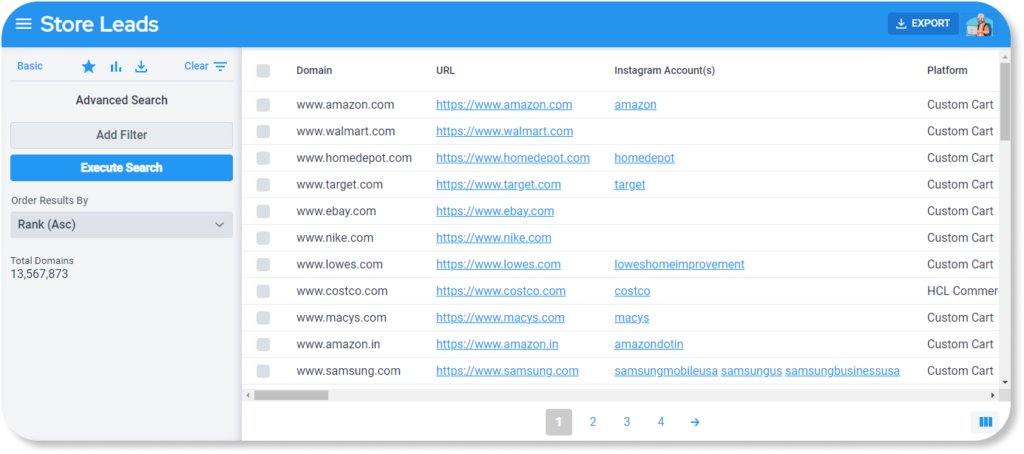
Advanced search allows you to use all filters without any preset limitations. This makes it easier to combine multiple filters and pinpoint the exact type of eCommerce businesses you’re looking for.
To add a filter to your advanced search, just hit the “Add Filter” button and you should see this menu pop up 👇
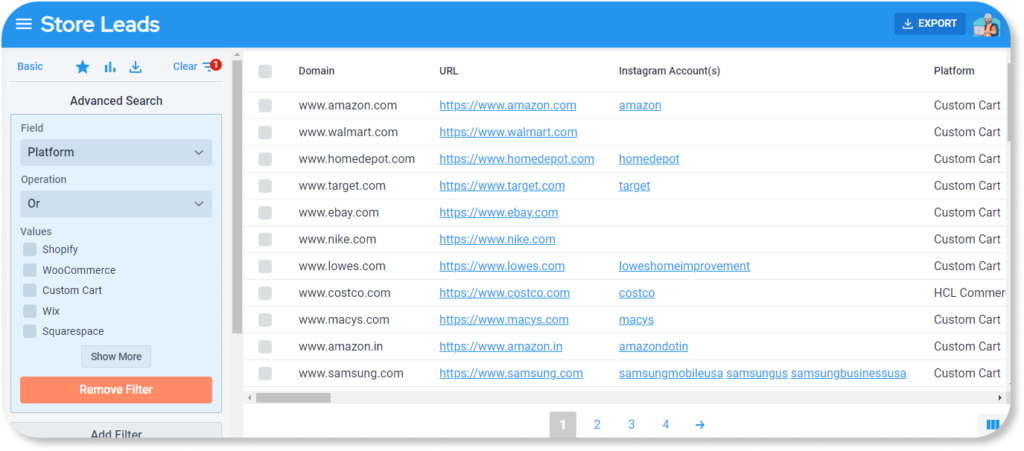
You can then select the “Field” option to find the filters you want to use.
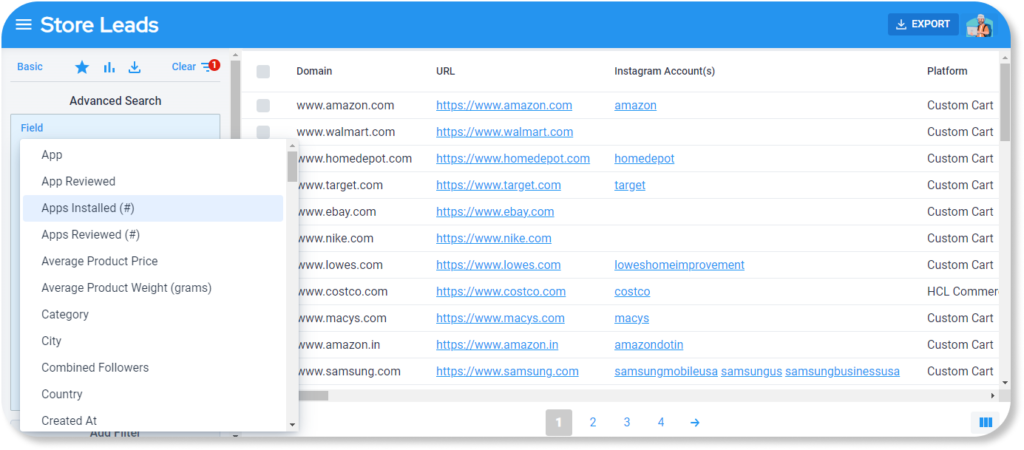
Once you find your filter, just select “Add filter” to add another filter to your search.
Must-Use Filters
#1 Platform
Why it’s important: You can use it to target less saturated platforms.
For example, suppose everyone in your industry is after Shopify stores. In that case, you can use the platform filter to target stores on WooCommerce, Magento, and other platforms, giving you an edge over competitors.
#2 Country
Why it’s important: Segmenting by country allows you to personalize your campaigns by timing them according to different time zones.
By knowing the country your prospects are in, you can schedule your campaigns during their work hours, boosting your response rates.
Additionally, you can tailor your greetings to match their local time, making your outreach messages more personalized and engaging.
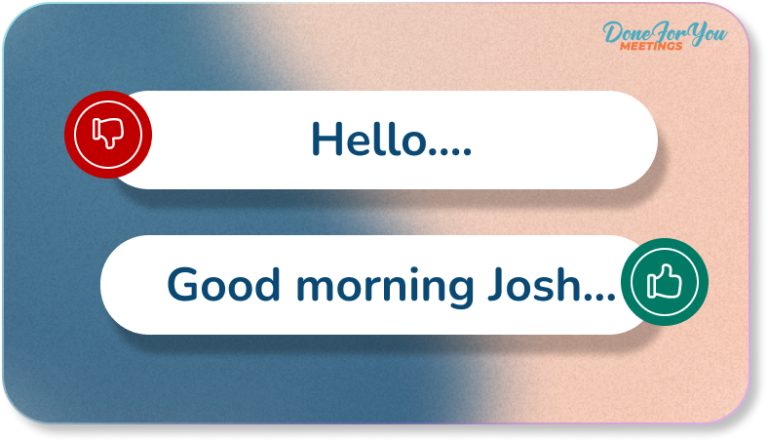
#3 Instagram Followers
Why it’s important: Instagram followers can be a good indicator of a brand’s revenue. Brands with significant Instagram followings and engagement are likely to generate lots of revenue.
#4 Instagram Follower Growth
Why it’s important: Identifying brands with rapid Instagram growth can give you some insight into growing brands that could be open to sustaining that growth with your services.
Messages referencing the prospects’ growth can also be used to personalize your outreach messages and increase engagement.
#5 City
Why it’s important: Running a localized campaign can significantly improve your engagement. Mentioning local references in your outreach messages can make them sound more relevant and personal.

#6 Language
Why it’s important: Targeting leads in their native language can greatly improve your campaign’s effectiveness.
#7 Technology
Why it’s important: Options under this filter can help you identify prospects investing in online marketing, an indicator showing that they are more likely to want to work with you.
Filters to Avoid
#1 Estimated Sales
Why you should avoid: The calculations behind estimated sales are often inaccurate because no one truly knows how much companies are making. Many brands may appear to be generating more revenue than they actually are, making the data unreliable.
#2 Estimated Revenue
Why you should avoid: Same reason as the Estimated Sales filter discussed above, it can be highly speculative.
#3 Estimated Visits
Why you should avoid: Estimated visits are based on indirect data sources and assumptions, which can lead to inaccuracies. Traffic can also vary widely due to marketing campaigns, SEO efforts, and social media activity, so relying on this metric can give you a distorted view of a site’s actual popularity.
#4 Estimated Page Views
Why you should avoid: Like estimated visits, estimated page views are calculated from indirect data and can be very misleading.
Page views can fluctuate significantly due to changes in content strategy, website updates, or shifts in user behavior. This metric might not provide a true picture of a website’s engagement levels.
#5 Employees
Why you should avoid: The employee count on Store Leads can be outdated or incorrect since it relies on secondary sources that may not be frequently updated.
For more accurate and current employee information, turn to platforms like Apollo or LinkedIn, which are regularly updated by companies and employees themselves.
#6 Monthly App Spend
Why you should avoid: Monthly app spend estimates can be misleading due to the complexity of app pricing models and variety subscription tiers.
Many companies may have custom pricing or negotiated rates not reflected in the estimates, so using this filter can lead to incorrect assumptions about a company’s technology budget.
Example Search
Let’s say you’re looking for apparel Shopify stores running Facebook ads. Your filters could look like this:
Shopify stores with a Facebook Pixel ⬇️
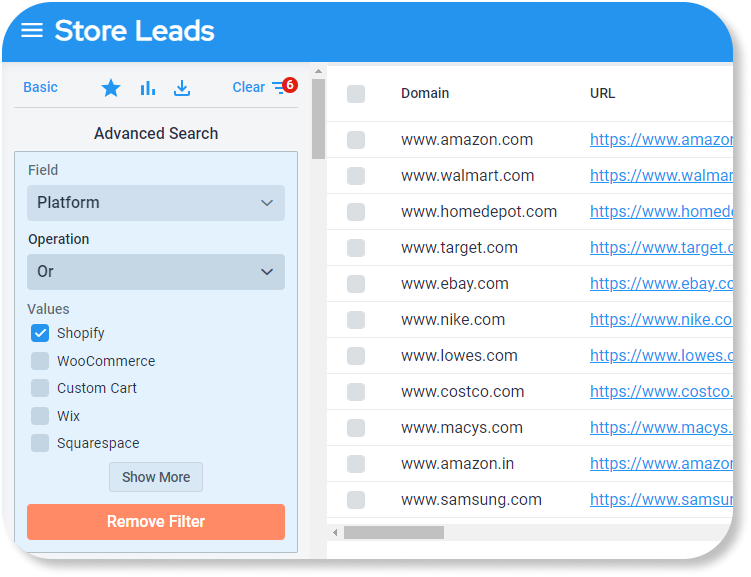
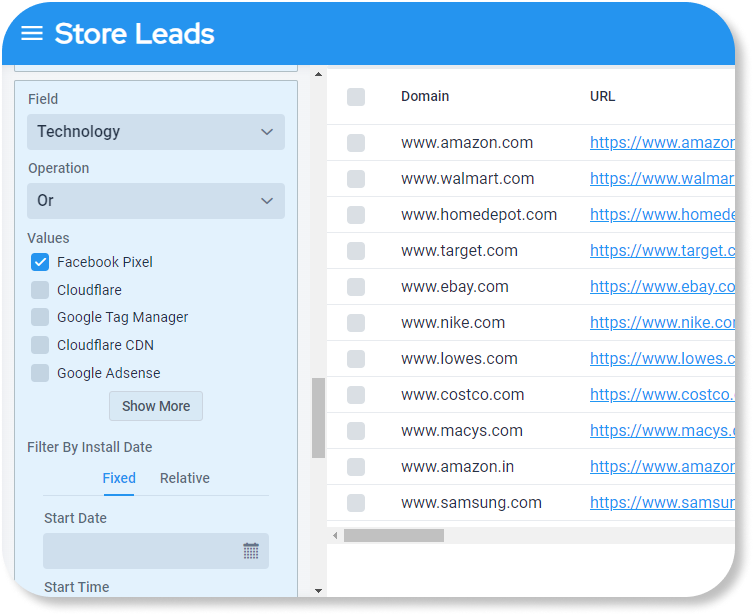
TikTok followers between 30,000 and 500,000 ⬇️

Located in the US, UK, or Canada ⬇️

Average product price between $20 and $80 ⬇️
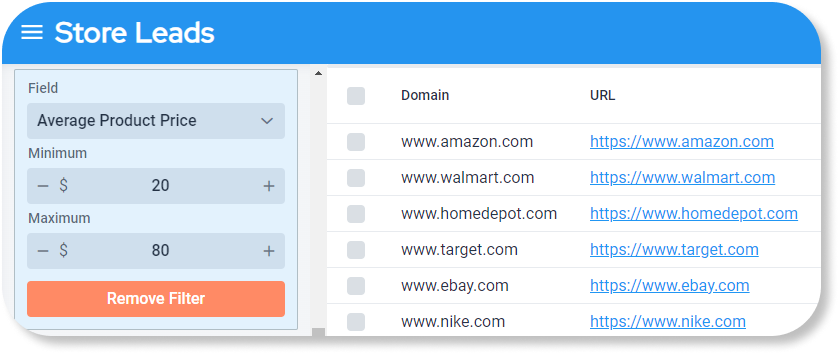
Category: Fashion (Apparel) ⬇️
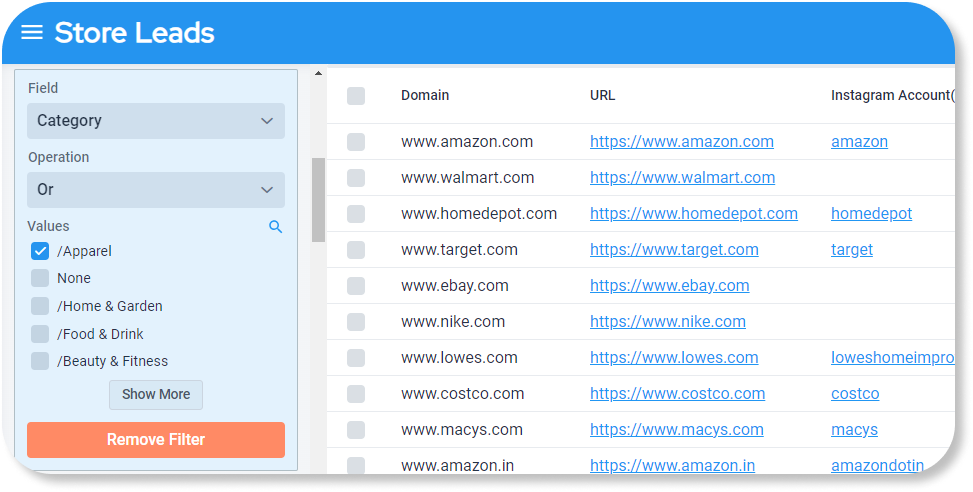
Running this search with the chosen filters gives us around 13,000 domains of apparel stores on Shopify.
Once your search is done, you can select each lead to see detailed information like the number of employees, technologies used, and more.
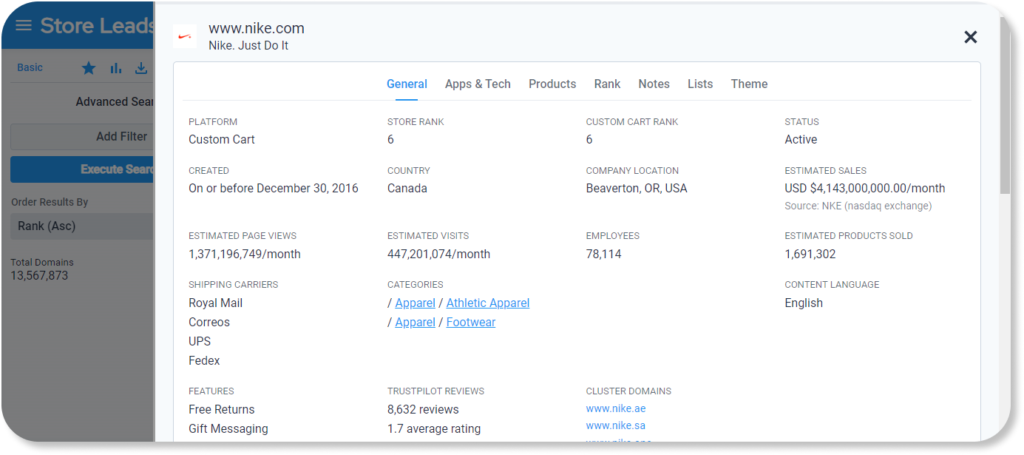
Protip: Avoid small lead pools. Ensure your search results are large enough to run an effective campaign. If you have fewer than 100 leads, consider broadening your filters to increase the lead count.
Exporting Your Leads
Filtered your search to your satisfaction? Great! Now, let’s export that goldmine of data.
Firstly, select the “export” button at the top right of your screen.
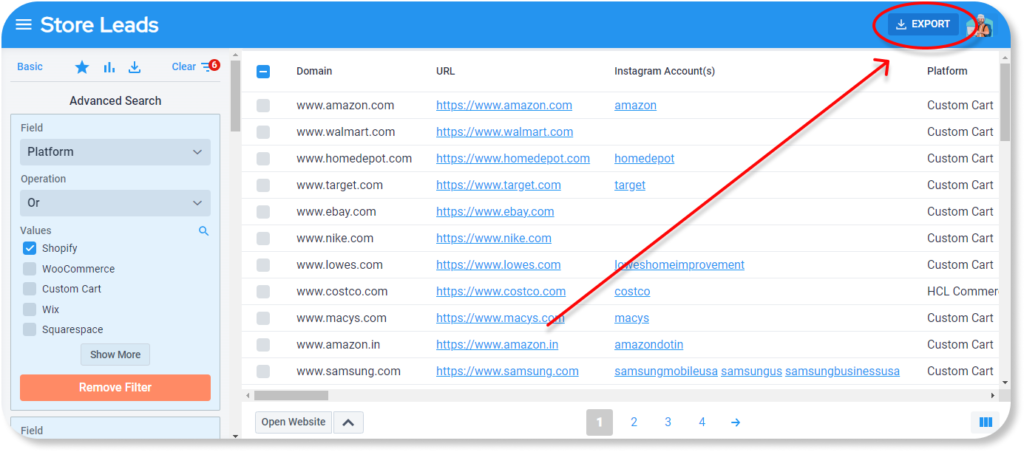
You can then select the information you want in your export file.

And finally, you can download the file in Excel format. It should look like this 👇

Once you have your Excel file, use tools like Apollo.io, Clay.com, or Instantly.ai to find contact information associated with the domains you exported.
Answers To Questions You Might Have
*Q: Is Store Leads suitable for non-ecommerce businesses?
A: No, Store Leads is specifically designed for e-commerce businesses only.
*Q: How often should I refresh my lead lists?
A: It’s best to refresh your lead lists regularly to get the most up-to-date data, especially if you’re targeting fast-growing brands. Store Leads’ API can help automate this process.
Conclusion
Store Leads is a must-have for anyone looking to gather high-quality e-commerce leads. It simplifies the process of finding leads, saving you time and resources. Whether you’re running cold email campaigns or other outreach systems, the data provided by Store Leads can significantly help your efforts.
So, are you ready to streamline your lead generation process and achieve better results? Give Store Leads a try!
And if you want tips on how you can use data from Store Leads for personalization, feel free to check them out in our personalization guide.
Read More About Cold Emails
- Automating Cold Email with SmartLead: A Full Guide
- How to Use Clay to Automate and Boost Your Lead Generation
- How To Stop Bounces & Boost Deliverability With Email Validation
- How to Build High Quality Lead Lists with FindyMail
- How To Warm-Up Your Cold Emails Like A Pro
- How to Achieve Consistent Cold Email Bookings
- How To Find Qualified eCommerce Clients With Store Leads
- Instantly.ai Review: The Best Cold Email Software In 2024?
- How to Secure Your First Client Without Case Studies
- Three Cold Email Personalization Tactics You Need to Know

